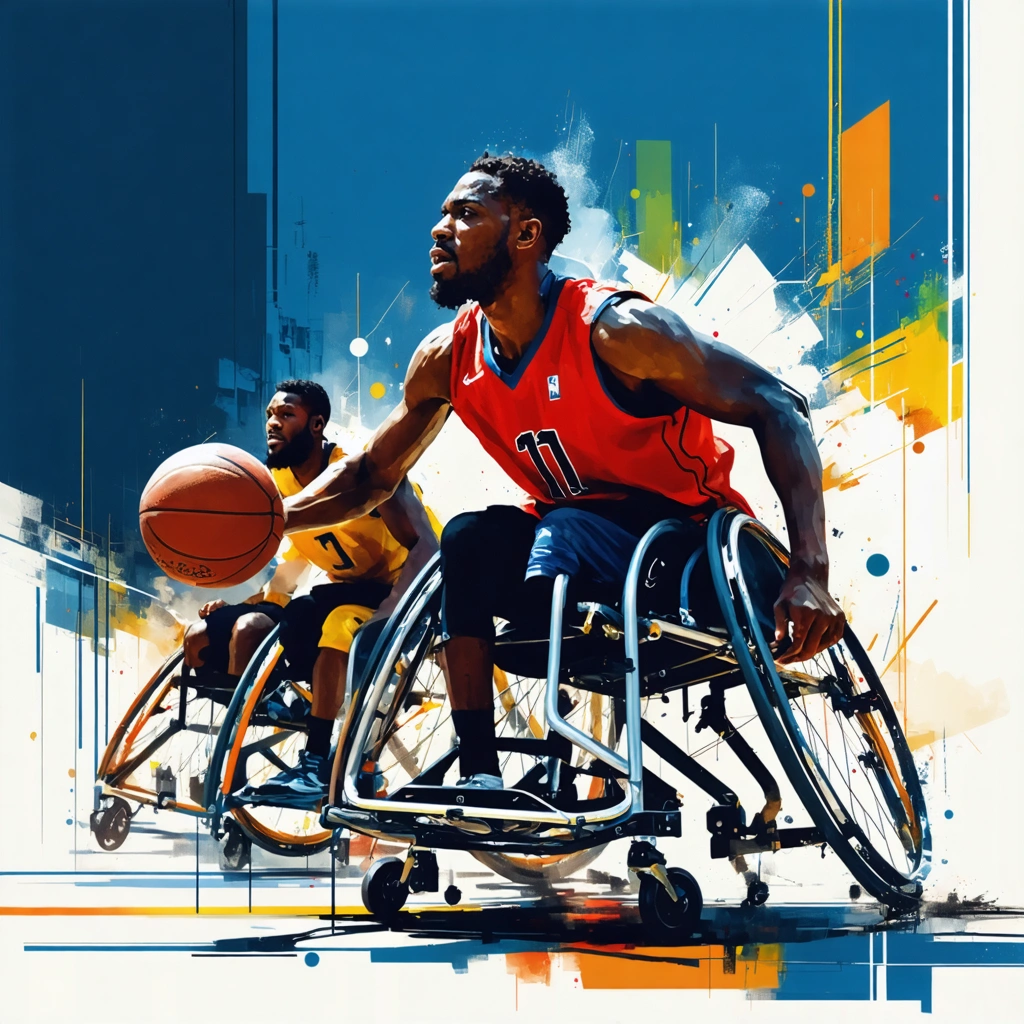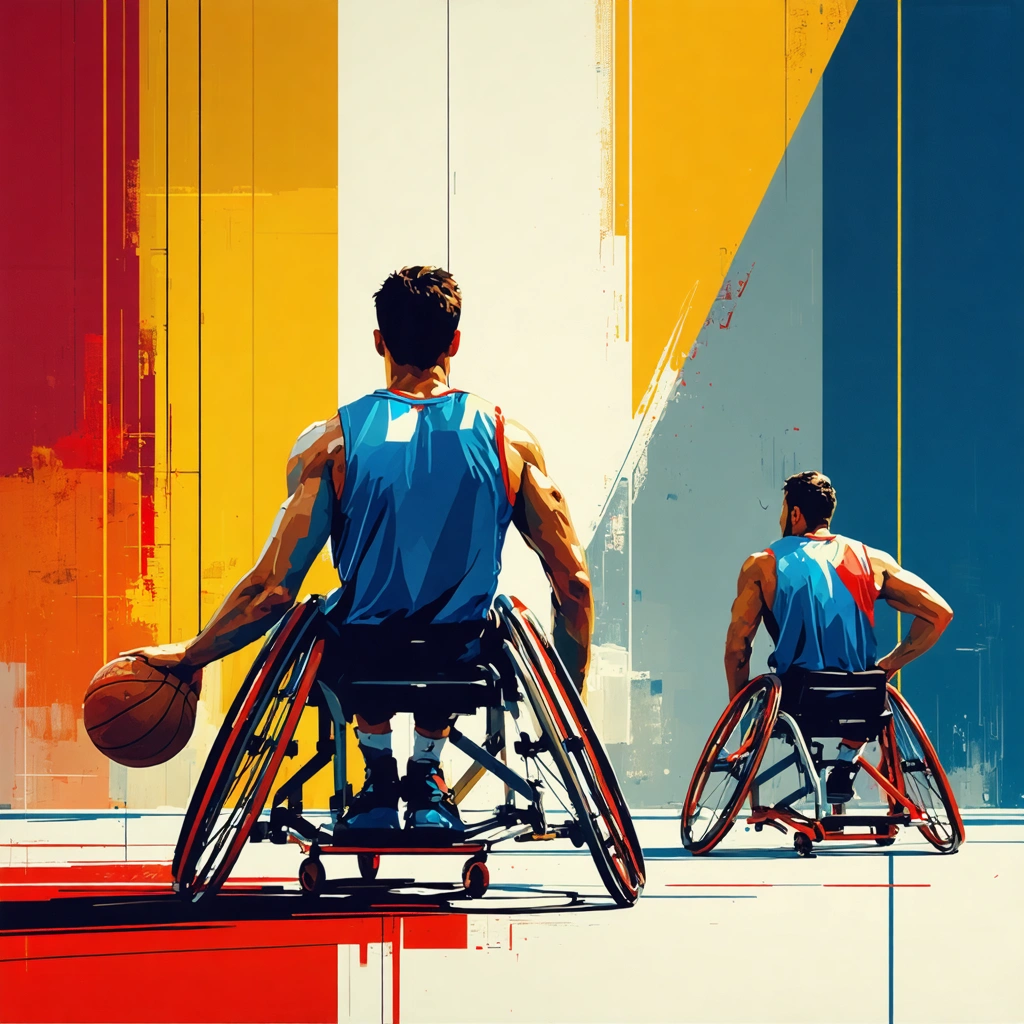Unleashing Athleticism and Determination on Wheels
Imagine a basketball court where the sound of wheels spinning and rubber squeaking takes center stage, where fierce competition and unyielding spirit collide. This isn’t just any game—it’s baloncesto en silla de ruedas paralímpicos, a thrilling showcase of speed, skill, and strategy played by athletes who defy both physical limitations and societal expectations. Yet, the excitement doesn’t stop on the hardwood. Across various arenas, from tennis courts to weightlifting platforms, Paralympic athletes demonstrate a level of commitment and prowess that commands respect and admiration.
Too often, the world views wheelchair sports through a narrow lens, focusing solely on the physical challenges athletes face. But what if we shifted our gaze to the raw athleticism, the intense training, and the stories of perseverance behind these remarkable competitors? What if we celebrated not just their participation but their dominance and innovation in sports like tenis en silla de ruedas paralímpicos and paralympics powerlifting?
Breaking Barriers Beyond the Wheelchair
Despite the rising visibility of Paralympic sports, many still underestimate the profound impact and complexity of these disciplines. The question is: why does the athleticism of wheelchair sports often fly under the radar compared to their Olympic counterparts? Perhaps it’s a lack of exposure or lingering stereotypes about disability and sports. Yet, these athletes’ journeys are no less intense—they endure grueling practices, tactical challenges, and mental fortitude that rival any able-bodied sportsperson.
Consider the agility required in baloncesto en silla de ruedas paralímpicos. This isn’t simply basketball with wheels attached; it’s a fast-paced game demanding quick reflexes, strategic passing, and impeccable coordination, all while maneuvering a specialized wheelchair designed for speed and stability. Similarly, tenis en silla de ruedas paralímpicos requires lightning-fast reactions, precise ball control, and stamina, as players navigate the court with a combination of upper body strength and tactical savvy.
And then there’s paralympics powerlifting—a test of raw strength, where athletes bench press staggering weights, pushing the limits of human capability. These moments, both on the court and in the lifting arena, embody the essence of Paralympic power, showcasing not just physical strength but an indomitable will to succeed.
What to Expect in This Exploration
In this article, we’ll dive deep into the world of wheelchair sports at the Paralympic level, highlighting how these athletes redefine what it means to be powerful and competitive. You’ll discover:
- How baloncesto en silla de ruedas paralímpicos combines strategy, speed, and skill to create an electrifying spectacle
- The unique demands and inspiring stories behind tenis en silla de ruedas paralímpicos, illustrating the grace and grit of its champions
- The sheer strength and technical mastery that define paralympics powerlifting, proving that power knows no boundaries
Beyond the games themselves, we’ll explore the broader impact of these sports—how they challenge societal perceptions, inspire inclusion, and fuel a movement that celebrates ability over disability. Whether you’re a sports fan, an aspiring athlete, or simply curious about the Paralympic movement, this journey into the heart of wheelchair sports promises to be as enlightening as it is exhilarating.
Get ready to witness the true meaning of athleticism and determination, powered by wheels and an unbreakable spirit.

Wheelchair Sports: Paralympic Power and Athleticism
What Are Paralympic Wheelchair Sports and Why Do They Matter?
Paralympic wheelchair sports represent a powerful combination of athletic skill, determination, and adaptive technology, showcasing the incredible capabilities of athletes with physical impairments. These sports are not only competitive events but also platforms for social inclusion, empowerment, and changing public perceptions about disability.
The Paralympic Games, held every four years alongside the Olympic Games, feature a variety of wheelchair sports that highlight the athletes' strength, agility, and strategic gameplay. The term "Paralympics power" reflects the intense physical and mental preparation required to compete at this elite level.
Which Wheelchair Sports Are Featured in the Paralympics?
Several wheelchair sports have become staples of the Paralympic movement, each with its own unique demands and appeal. Some of the most prominent include:
- Baloncesto en silla de ruedas paralímpicos (Wheelchair Basketball): This fast-paced, highly tactical team sport mirrors able-bodied basketball but is adapted to wheelchair use. It demands upper body strength, precision handling, and rapid decision-making.
- Tenis en silla de ruedas paralímpicos (Wheelchair Tennis): Played on standard tennis courts with some rule adaptations (like allowing two bounces), this sport requires exceptional hand-eye coordination, speed, and endurance.
- Paralympics Powerlifting: Focused on upper body strength, powerlifting in the Paralympics tests athletes' ability in the bench press. It highlights raw power and technique, often drawing athletes from various impairment categories.
How Do Baloncesto en Silla de Ruedas Paralímpicos Athletes Train and Compete?
Wheelchair basketball is one of the most popular Paralympic sports worldwide. Athletes train intensively to develop:
- Wheelchair handling skills: Manoeuvring the chair quickly and efficiently is vital during fast breaks and defensive plays.
- Upper body strength and endurance: Necessary for shooting, passing, and maintaining speed throughout the game.
- Team strategy and communication: Like traditional basketball, teamwork and tactical awareness are essential for success.
For example, the Spanish national team has made significant strides in international competitions, emphasizing rigorous training and innovation in wheelchair design to enhance performance.
What Makes Tenis en Silla de Ruedas Paralímpicos Unique?
Wheelchair tennis is distinguished by its allowance of two bounces, making it accessible yet challenging. Key aspects include:
- Mobility and agility: Players must quickly reposition their wheelchairs to respond to shots from opponents.
- Stamina and technique: Matches can be lengthy and require sustained concentration and precise shot execution.
- Adaptive equipment: Custom-built sports wheelchairs that optimize speed and turning radius.
Notable athletes such as Esther Vergeer, one of the most successful wheelchair tennis players in history, have elevated the sport's profile through their dominance and sportsmanship.
Why Is Paralympics Powerlifting a Test of Strength and Determination?
Paralympic powerlifting focuses exclusively on the bench press, demanding maximal upper body strength. Athletes compete in weight categories, similar to able-bodied powerlifting, but the emphasis is on technique and explosive power.
The sport is inclusive of various physical impairments, and athletes undergo rigorous classification to ensure fair competition. Training programs emphasize:
- Building muscle strength and endurance
- Perfecting bench press technique to maximize lift efficiency
- Maintaining mental focus and overcoming physical challenges
Powerlifters like Nigerian athlete Lucy Ejike have inspired many with their record-breaking performances and dedication, embodying the spirit of paralympics power.
How Do These Sports Promote Inclusion and Inspire Society?
Beyond competition, wheelchair sports in the Paralympics serve as powerful tools for social change. They:
- Challenge stereotypes about disability by highlighting athletic excellence.
- Encourage participation in physical activity among people with impairments.
- Foster international camaraderie and respect through shared sporting values.
Media coverage and increasing public interest have led to greater accessibility and investment in adaptive sports programs worldwide, creating pathways for new athletes to emerge.
What Should You Know If You're Interested in Watching or Participating?
To engage with Paralympic wheelchair sports, consider the following:
- Watching: Paralympic events are broadcast globally, with many matches available online, offering thrilling displays of skill and competition.
- Participating: Local clubs and organizations often provide opportunities to try baloncesto en silla de ruedas paralímpicos, tenis en silla de ruedas paralímpicos, and powerlifting with coaching and adapted equipment.
- Supporting: Advocacy and sponsorship help grow these sports and provide resources for athletes.
Conclusion
Wheelchair sports in the Paralympics exemplify the extraordinary capabilities of athletes who combine physical prowess with resilience and strategic skill. Whether it's the fast-paced baloncesto en silla de ruedas paralímpicos, the dynamic rallies of tenis en silla de ruedas paralímpicos, or the raw strength showcased in paralympics powerlifting, each sport offers inspiring stories of human potential. Understanding these sports provides insight not only into elite athleticism but also into broader themes of inclusion, empowerment, and determination.

